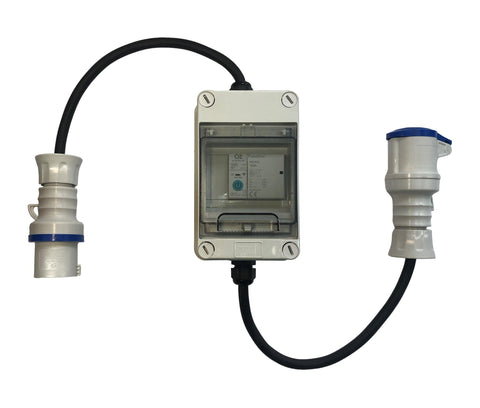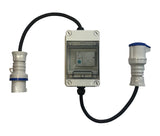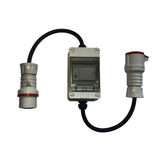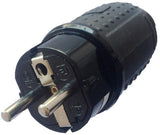Building on the success of our popular heavy duty Wi-Fi controls, this versatile unit provides the only plug-in solution in the UK for the Wi-Fi automation of high power and inductive loads. Simply plug in the unit between the appliance and supply socket to enjoy full automation. Great for remote operation, timer functions and taking advantage of lower energy tariff periods. We also provide this unit with a choice of Zigbee, Z-Wave or Shelly control here.
The unit can be programmed using either the Tuya or Smart Life App and can be integrated with Google Home, Amazon Alexa and other Wi-Fi based platforms. Functions within the Smart Life App include:
- Manual off/off control via any IoS Apple or Android phone or tablet.
- Countdown timer - The unit will turn on after the pre-set time.
- Maximum duration timer - When turned on the unit will only operate for a defined maximum period of time.
- Scheduled timer e.g. On Monday 07:00, off Monday 17:00.
- Random timer - Unit will turn on and off randomly during pre-set times.
- Scenes - Can be triggered by a separate (not supplied) senor or Wi-Fi button e.g. A temperature below 19C will turn the unit on.

Where WiFi is not available at all, a stand alone plug in timer is also available here.
Inductive vs Resistive Loads
Most Wi-Fi controls use an integral relay, which is a cheap, compact way of controlling resistive loads. Resistive loads do not contain a motor and require a steady amount of current, even on start up e.g. lights.
In contrast, inductive loads contain a motor or coil e.g. power tools, pumps and refrigerators. When an inductive load is first powered up, it draws a much larger start up current, typically 2.5-3 times its normal operating current. For example a 500w drill may briefly draw 1250-1500w when it starts up. The main issue is actually caused when the relay contacts open to turn the tool off. The stored inductive energy in the motor coil is discharged, resulting in a damaging arc across the terminals, which can eventually cause the relay to fail.
To overcome this issue, instead of using the relay within the Wi-Fi module to switch the load directly, our units connect the output to a high quality contactor, which then switches the load. Contactors work using the same principle as a relay , but they are much larger and far better suited to switching higher current inductive loads. The picture below shows the sheer size difference between a typical contactor (left) and relay (right); when it comes to switching inductive loads, contact size really does make a difference.

Contactor rating:
| Unit | Resistive | Inductive |
| 230v 16/32A | 40A (AC-7a) | 15A (AC-7b) |
| 415v 16/32A | 63A (AC-7a) | 20A (AC-7b) |
Specification:
- Select from a range of CEE connectors.
- Gewiss robust IP55 weatherproof DIN enclosure. Dimensions W105mm x H170mm x D98mm. 415v 32A unit uses a larger enclosure W180mm x H180mm x D98mm.
- 0.3m in/out of industrial specification H07RN-F rubber cable, specifically manufactured for harsh environments with high mechanical, chemical, water and UV resistance. Flexibility and performance is retained over a wide temperature range (-25 to 55°C). Find out what’s so special about this cable.
- Please note that the controller will not work if the appliance connected to it has a DoL motor starter or no-volt release switch (NVR). These commonly both have a start and stop switch.
- Please contact us for custom cable lengths or connectors.
- PAT tested.
Manual:
- Click here to download the manual.
Connector Options:
Please use the guide below to ensure that the correct connectors are ordered, using the colour and diameter if unsure.
| Connector | Details |
 |
230v 16A CEE7/7 European
|
 |
230v 16A IEC 60309
|
 |
230v 32A IEC 60309
|
|
|
415v 16A IEC 60309
|
 |
415v 32A Red Sockets (IEC 60309)
|





